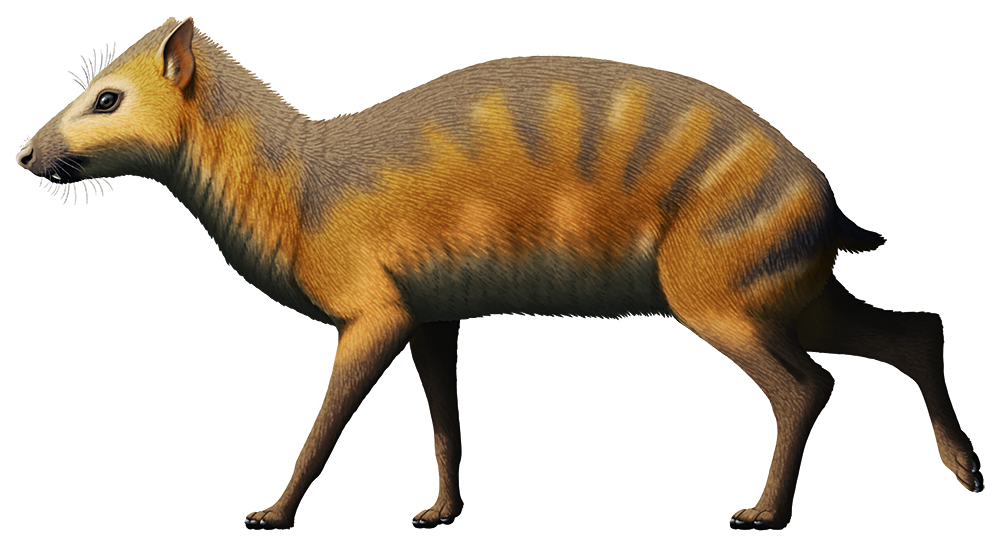This is not a deer.
In Africa during the Eocene and Oligocene, the main terrestrial herbivores were a different type of mammal entirely: hyraxes, the close relatives of elephants and manatees. Although their only modern representatives are small climbing rodent-like animals, hyraxes were once a much more diverse and widespread group, filling a variety of ecological niches and ranging from the size of rats up to the size of rhinos.
Antilohyrax pectidens was a mid-sized example of these diverse hyraxes, standing about 50cm tall at the shoulder (1′8″) and living around 34-28 million years ago in Egypt. It had a deer-like snout and long slender limbs adapted for running and leaping, with leg bones incredibly similar in size and proportion to modern springbok.
Its incisor teeth were comb-shaped and resembled those of colugos, so it was probably a similar sort of selective browser eating soft leaves and shoots.


Amazing, what a take!!! Would you mind showing us more hyraxes in the future? They seem so ignored by paleoartists. I bet they had all kind of fascinating shapes and adaptations.
I’ll probably do more hyraxes at some point. There’s just not much information out there about most of them, and only very fragmentary fossils, so it’s quite difficult to do reconstructions of them.